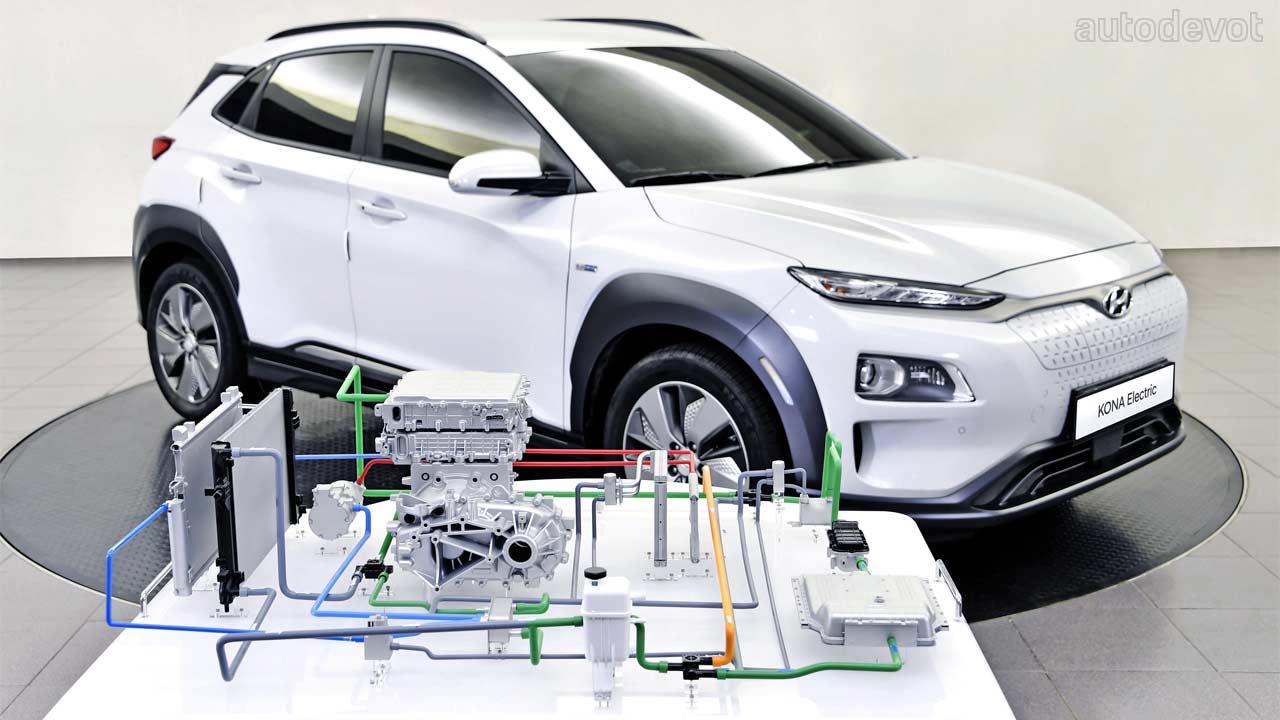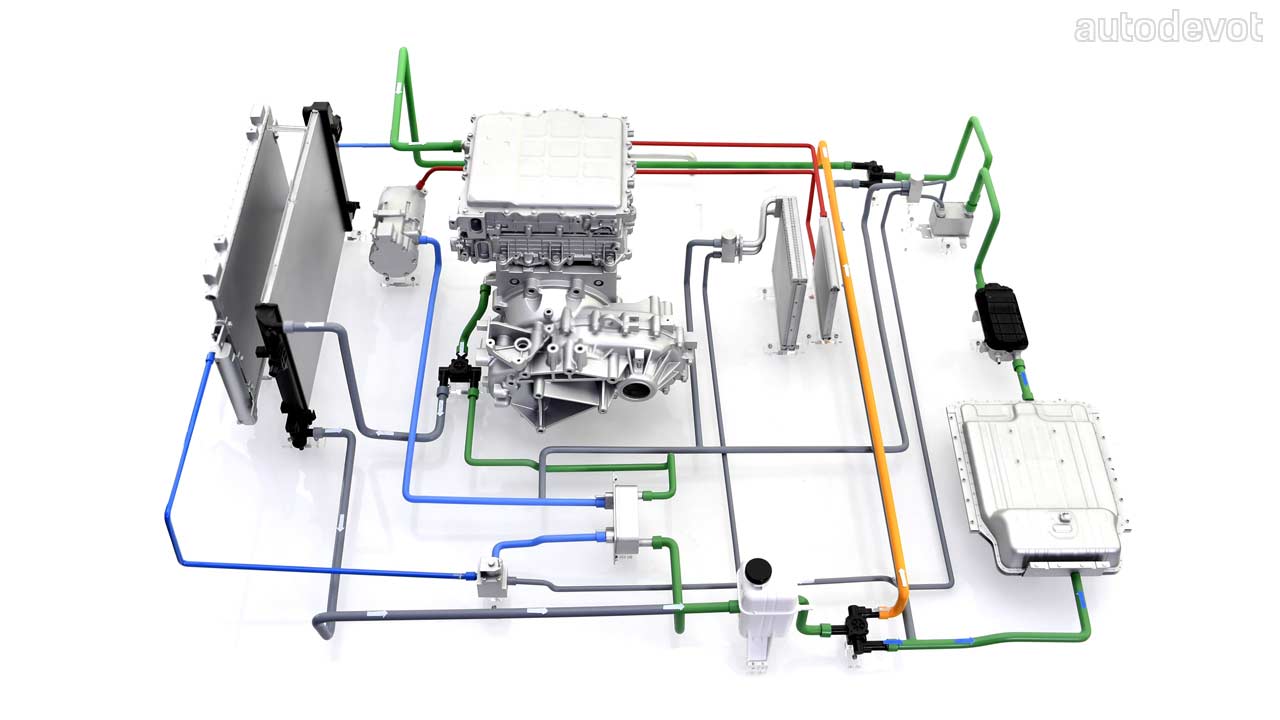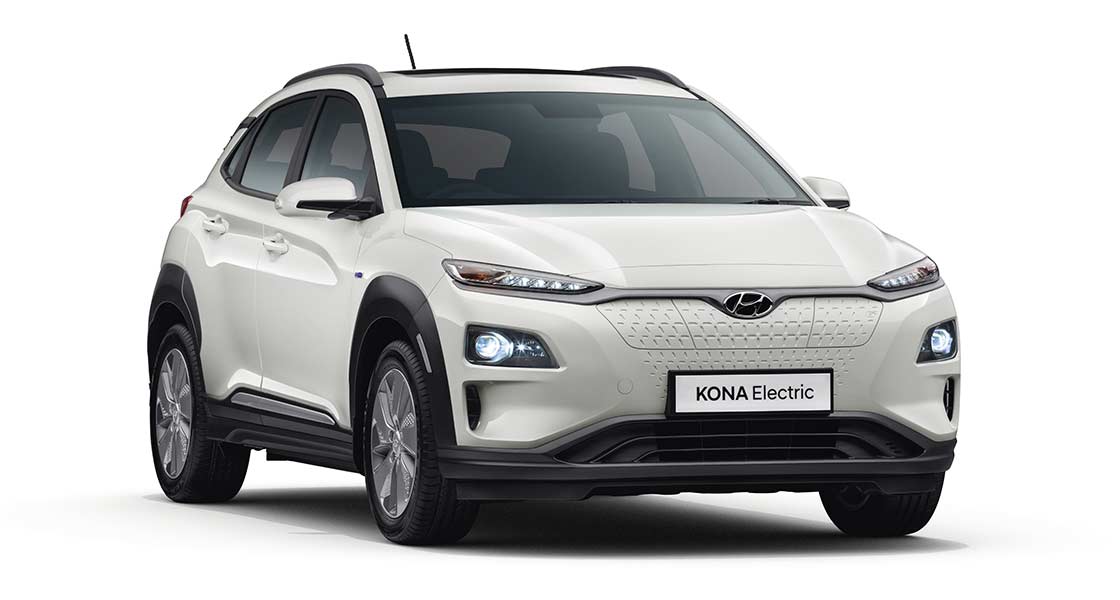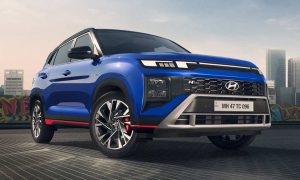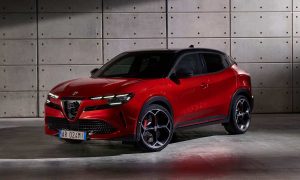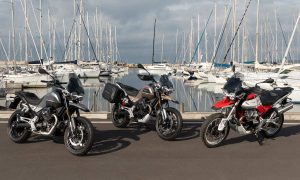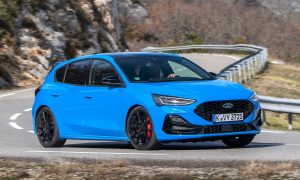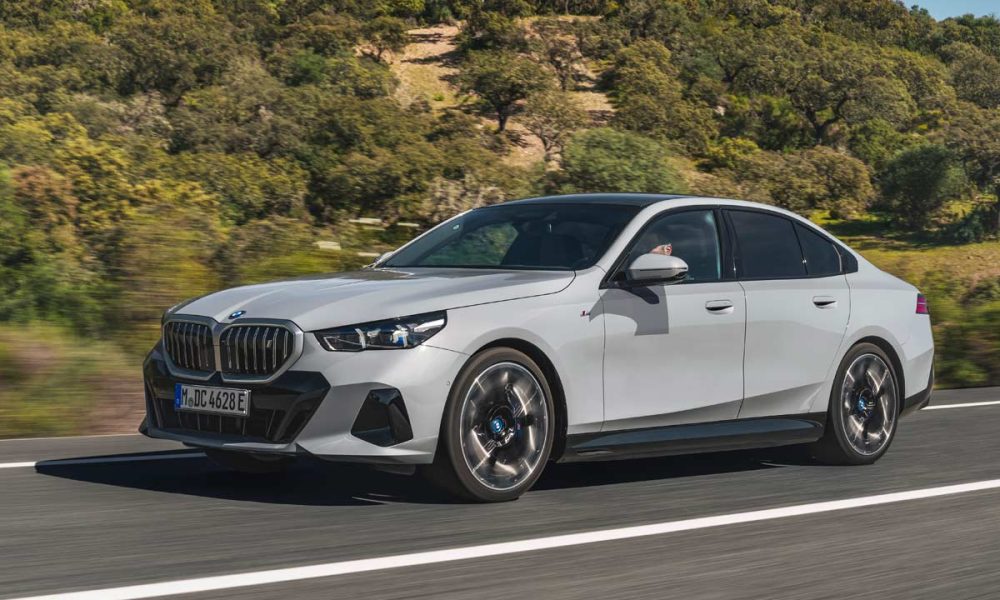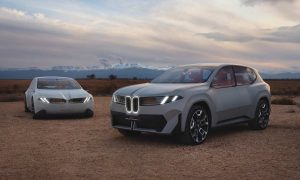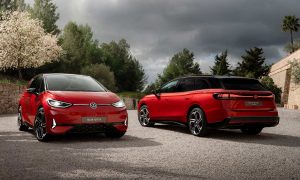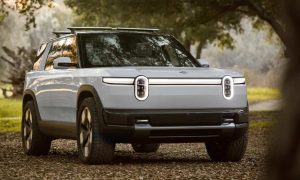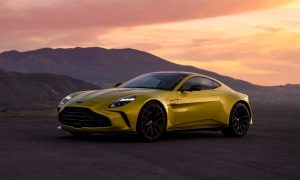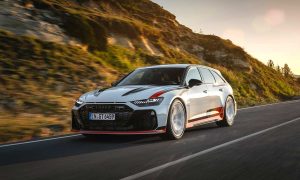Hyundai has revealed a new heat pump system for electric vehicles, which is claimed to maximize the driving range in low temperatures. The system scavenges waste heat to warm the cabin.
The technology was first introduced in 2014 on the first-generation Kia Soul EV. Comprising a compressor, evaporator and condenser, the heat pump captured waste heat given off by the vehicle’s electrical components, recycling this energy to heat the cabin more efficiently. Apparently, this technology safeguarded the Soul EV’s 180 km (111 mi) electric range in cold weather driving conditions.
The heat pump system has now been developed further, where it scavenges waste heat from additional sources for an even better cold-weather EV range. These changes are claimed to offer a more consistent range in temperatures where other EVs start to see a significant decline in the distance possible from a single charge.
It now harvests significantly more energy by recycling additional waste heat not only from power electrics (PE) modules (such as drive motors, on-board chargers, and inverters), but also from the battery pack and slow charger.
The system uses the heat generated by these components to vaporize refrigerant from liquid to gas form. High-pressure gas is discharged from the compressor and forced into a condenser to be converted back into a liquid. This process generates additional heat energy that is recovered by the heat pump and used to warm the cabin.
This captured energy improves the efficiency of the HVAC (heating, ventilation and air conditioning) system, recycling it to more efficiently heat up the cabin and minimize battery power consumption. By reducing the load on the battery, the heat pump cuts energy consumption from the HVAC system, maximizing the available electric driving range of the car.
Water-cooling
In addition, a water-cooling system for the battery packs, rather than conventional air cooling, has yielded a further increase in range without increasing physical dimensions, the company said. The cells can be packaged much more tightly, with water-cooling channels taking up less space than air-cooling channels, increasing battery density by up to 35%.
This innovation means the latest EVs from Hyundai and Kia offer around twice as much driving range and battery capacity compared with their first-generations. The second-generation Soul EV, with a 64 kWh battery occupying a similar amount of space, is capable of traveling up to 386 km (239 mi) on a single charge, the company said.
Kona Electric wins Norwegian real-range validation test
The Norwegian Automotive Federation (NAF) recently compared 20 EVs in cold and warm weather conditions to identify models with the most consistent driving range and charging performance. The test monitored the performance deviation of each vehicle in cold conditions compared with quoted manufacturer figures.
The Kona Electric took first place, traveling 405 km (251 mi) in the cold – compared with the 449 km (278 mi) quoted under WLTP combined cycle testing conditions (23°C/73°F). In severe cold weather, the Kona Electric offered 91% of its WLTP combined cycle range, deviating 9% from its claimed all-electric driving range.
Korean Ministry of Environment
A study carried out by Korea’s Ministry of Environment on the Kona Electric and Kia Niro EV found that the heat pump significantly reduced battery consumption in cold conditions. When each car was driven in temperatures of -7°C (19°F) with the HVAC system activated, they were able to maintain 90% of their driving range compared with journeys undertaken at an ambient 26°C (79°F) – a new benchmark for other EVs. By contrast, many EVs offered by other manufacturers saw their total electric driving range drop by between 18 and 43% under the same test conditions, the company boasted.

Leave a Reply
Note: Comments that are unrelated to the post above get automatically filtered into the trash bin.
